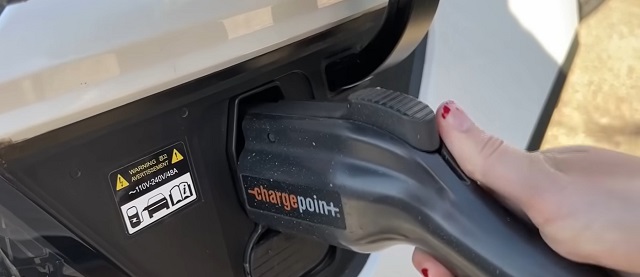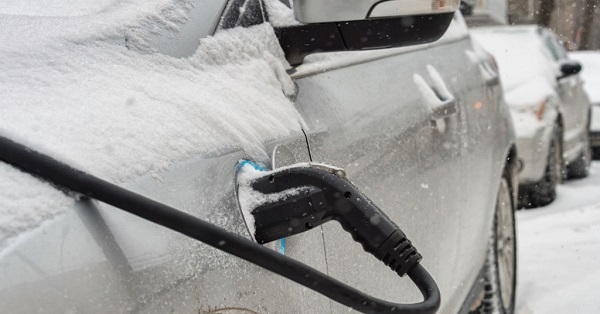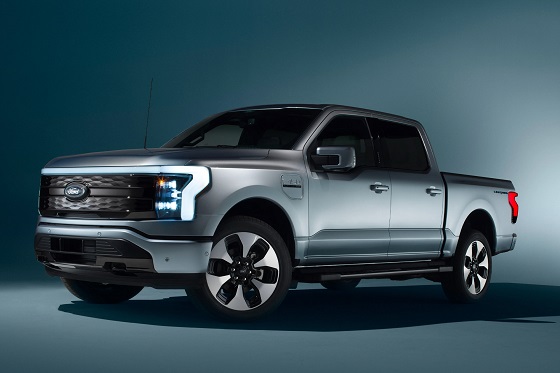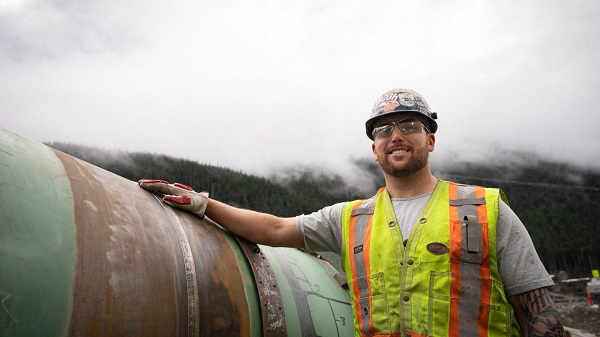Automotive
Automakers Hit Reverse On Idealistic Electric Vehicle Targets Despite Billions In Biden-Harris Subsidies

From the Daily Caller News Foundation
By Owen Klinsky
Automakers have continued to backpedal on electric vehicle (EV) targets over the last year as a slackening of consumer demand has hampered growth despite the billions in subsidies lavished on the industry by the Biden-Harris administration.
A wide array of auto manufacturers have abandoned key EV goals since February, with Volvo, Ford and Mercedes-Benz all dialing back electric quotas or dropping previously planned product lines. The shifts in corporate strategy suggest the EV transition — once touted by auto executives like Ford CEO Jim Farley as the industry’s future — may not be as feasible as once thought due to consumer aversion to lower mileage ranges, a lack of charging infrastructure and higher prices, experts told the Daily Caller News Foundation.
The auto industry’s change in direction is in spite of the billions in subsidies doled out to the industry via the 2021 Bipartisan Infrastructure Bill and the 2022 Inflation Reduction Act, with the White House offering a $7,500 federal tax credit for certain EVs to ease costs for buyers, and allocating $12 billion for carmakers to retrofit factories for EV production. The administration has also put in place stringent regulations designed to phase out internal combustion engine vehicles, including a tailpipe emissions rule that would effectively require about 67% of all light-duty vehicles sold after model year 2032 to be electric vehicles (EVs) or hybrids.
“Even after throwing money at EVs hand over fist, basically paying people tax dollars to drive these cars off the lots, you have a dire spiral of (1) not enough demand to support the number of cars being produced, and (2) the people you paid to buy them now wanting to go back to what they had before,” O.H. Skinner, executive director of the Alliance for Consumers and the former solicitor general of Arizona, told the DCNF.
Autos over the last 5 years:
Auto CEOs: “we’re going electric by 2030 so I can become the toast of the town and get glossy magazine spreads written about how visionary and green I am.”
Engineers: “that’s not possible…”
Accountants: “that’s not possible…”
Customers: “we… https://t.co/ldca2L0n4G
— Alliance For Consumers (@for_consumers) September 4, 2024
Despite the generous tax credits, consumers have been hesitant to adopt EVs at the rate the Biden-Harris administration and automakers have hoped, with EV sales growing 50% in the first half of 2023 and 31% in the first half of 2024, less than the 71% increase in the first half of 2022. Moreover, a June poll from The Associated Press-NORC Center for Public Affairs Research and the University of Chicago’s Energy Policy Institute found 46% of respondents were unlikely or very unlikely to purchase an EV, while just 21% were “very” or “extremely” likely to make the change.
Consumer sentiment towards EVs has struggled even among those who have already purchased the vehicles, with a June survey from leading consulting firm McKinsey and Company finding nearly half of Americans who own an EV want to go back to a standard vehicle.
“The [EV market] headwinds come from physical realities that translate into economic and practical realities,” Mark Mills, a distinguished senior fellow at the Texas Public Policy Foundation and an expert on the automobile market, told the DCNF. “EVs are inherently more expensive… and most consumers are very price sensitive; EV fueling for most people is far less convenient… [and] EV fueling infrastructure is extremely expensive and will take a long time to build out.”
The average cost of a new EV was 10% higher than the price of a standard vehicle as of January, with the 2024 electric version of a base Ford F-150 costing roughly $20,000 more. The Ford F-Series was the best-selling vehicle in the U.S. in 2023.
Ford canceled plans to produce a three-row electric SUV in August and reduced output of its F-150 Lightning pickup truck in January. The reversals follow Ford losing $4.7 billion on EVs in 2023, equating to nearly $65,000 per EV it sold. When reached, a Ford spokeswoman referred back previous comments to the DCNF stating that “we aren’t going to launch vehicles unless they are going to be profitable within 12 months of launch.”
“These are staggering costs to impose on American families,” Diana Furchtgott-Roth, director of the Center for Energy, Climate and Environment at the Heritage Foundation, told the DCNF.
EV carmakers Tesla and Lucid have also struggled in the last year, announcing plans to layoff roughly 10% and 6% of their workforces, respectively.
On top of sheer cost, expanding charging infrastructure has also been a challenge for manufacturers, with the Biden-Harris administration having built just seven EV charging stations in four states as of April 2024, despite the Bipartisan Infrastructure Bill earmarking $7.5 billion for the creation of a national EV charger network. A lack of demand, union requirements, as well as diversity, equity and inclusion initiatives, with the Department of Transportation requiring applicants to promise to perform “intentional outreach to underserved communities” by hosting “neighborhood block parties” in order to qualify for funding, have significantly slowed down the project’s rollout.
Beyond a lack of infrastructure, charging can simply be inconvenient for consumers, with refueling times ranging from 20 minutes to upwards of 50 hours depending on charger voltage and battery size, according to American automotive resource company Edmunds. Even “fast charging” in the urban center of Washington, D.C., can take as long as 35 minutes.
Faced with these obstacles, Volvo Cars abandoned plans to offer an all-electric line-up by the end of the decade, instead aiming to have between 90% and 100% of its cars be fully electric or plug-in hybrids by that time. Mercedes-Benz made a similar announcement back in February, slashing its target of selling 100% EVs by 2030 to just 50% after its net profit fell 21.5% year-over-year in the fourth quarter of 2023.
“The Biden-Harris administration is spending billions in tax incentives to pay auto companies to make EVs, and billions for tax credits to pay households to buy the cars,” Furchtgott-Roth told the DCNF. “Still, Americans are too smart to fall for a product that is not suited for them.”
The White House, Volvo and Mercedes-Benz did not respond to a request for comment from the DCNF.
Automotive
Canada’s EV gamble is starting to backfire

Things have only gone from bad to worse for the global Electric Vehicle industry. And that’s a problem for Canada, because successive Liberal governments have done everything in their power to hitch our cart to that horse.
Earlier this month, the Trump Administration rolled back more Biden-era regulations that effectively served as a back-door EV mandate in the United States. These rules mandated that all passenger cars be able to travel at least 65.1 miles (and for light trucks, 45.2 miles) per gallon of gasoline or diesel, by the year 2031. Since no Internal Combustion Engine (ICE) vehicle could realistically conform to those standards, that would have essentially boxed them out of the market.
Trump’s rolling them back was a fulfillment of his campaign promise to end the Biden Administration’s stealth EV mandates. But it was also a simple recognition of the reality that EVs can’t compete on their own merits.
For proof of that, look no further than our second bit of bad news for EVs: Ford Motor Company has just announced a massive $19.5 billion write-down, almost entirely linked to its aggressive push into EVs. They’ve lost $13 billion on EVs in the past two years alone.
The company invested tens of billions on these go-carts, and lost their shirt when it turned out the market for them was miniscule.
Ford’s EV division president Andrew Frick explained, “Ford is following the customer. We are looking at the market as it is today, not just as everyone predicted it to be five years ago.”
Of course, five years ago, the market was assuming that government subsidies-plus-mandates would create a market for EVs at scale, which hasn’t happened.
As to what this portends for the market, the Wall Street Journal argued, “The company’s pivot from all-electric vehicles is a fresh sign that America’s roadways – after a push to remake them – will continue to look in the near future much like they do today, with a large number of gas-powered cars and trucks and growing use of hybrids.”
And that’s not just true in the U.S. Across the Atlantic, reports suggest the European Union is preparing to delay their own EV mandates to 2040. And the U.K.’s Labour government is considering postponing their own 2030 ICE vehicle ban to align with any EU change in policy.
It’s looking like fewer people around the world will be forced by their governments to buy EVs. Which means that fewer people will be buying EVs.
Now, that is a headache for Canada. Our leaders, at both the federal and provincial levels, have bet big on the success of EVs, investing billions in taxpayer dollars in the hopes of making Canada a major player in the global EV supply chain.
To bolster those investments, Ottawa introduced its Electric Vehicle mandate, requiring 100 per cent of new light-duty vehicle sales to be electric by 2035. This, despite the fact that EVs remain significantly more expensive than gas-and-diesel driven vehicles, they’re poorly suited to Canada’s vast distances and cold climate, and our charging infrastructure is wholly inadequate for a total transition to EVs.
But even if these things weren’t true, there still aren’t enough of us to make the government’s investment make sense. Their entire strategy depends on exporting to foreign markets that are rapidly cooling on EVs.
Collapsing demand south of the border – where the vast majority of the autos we build are sent – means that Canadian EVs will be left without buyers. And postponed (perhaps eventually canceled) mandates in Europe mean that we will be left without a fallback market.
Canadian industry voices are growing louder in their concern. Meanwhile, plants are already idling, scaling back production, or even closing, leaving workers out in the cold.
As GM Canada’s president, Kristian Aquilina, said when announcing her company’s cancellation of the BrightDrop Electric delivery van, “Quite simply, we just have not seen demand for these vehicles climb to the levels that we initially anticipated…. It’s simply a demand and a market-driven response.”
Prime Minister Mark Carney, while sharing much of the same environmental outlook as his predecessor, has already been compelled by economic realities to make a small adjustment – delaying the enforcement of the 2026 EV sales quotas by one year.
But a one-year pause doesn’t solve the problem. It kicks the can down the road.
Mr. Carney must now make a choice. He can double down on this troubled policy, continuing to throw good money after bad, endangering a lot of jobs in our automotive sector, while making transportation more expensive and less reliable for Canadians. Or he can change course: scrap the mandates, end the subsidies, and start putting people and prosperity ahead of ideology.
Here’s hoping he chooses the latter.
The writing is on the wall. Around the world, the forced transition to EVs is crashing into economic reality. If Canada doesn’t wake up soon, we’ll be left holding the bag.
Automotive
Ford’s EV Fiasco Fallout Hits Hard


From the Daily Caller News Foundation
I’ve written frequently here in recent years about the financial fiasco that has hit Ford Motor Company and other big U.S. carmakers who made the fateful decision to go in whole hog in 2021 to feed at the federal subsidy trough wrought on the U.S. economy by the Joe Biden autopen presidency. It was crony capitalism writ large, federal rent seeking on the grandest scale in U.S. history, and only now are the chickens coming home to roost.
Ford announced on Monday that it will be forced to take $19.5 billion in special charges as its management team embarks on a corporate reorganization in a desperate attempt to unwind the financial carnage caused by its failed strategies and investments in the electric vehicles space since 2022.
Cancelled is the Ford F-150 Lightning, the full-size electric pickup that few could afford and fewer wanted to buy, along with planned introductions of a second pricey pickup and fully electric vans and commercial vehicles. Ford will apparently keep making its costly Mustang Mach-E EV while adjusting the car’s features and price to try to make it more competitive. There will be a shift to making more hybrid models and introducing new lines of cheaper EVs and what the company calls “extended range electric vehicles,” or EREVs, which attach a gas-fueled generator to recharge the EV batteries while the car is being driven.
Dear Readers:
As a nonprofit, we are dependent on the generosity of our readers.
Please consider making a small donation of any amount here.
Thank you!
“The $50k, $60k, $70k EVs just weren’t selling; We’re following customers to where the market is,” Farley said. “We’re going to build up our whole lineup of hybrids. It’s gonna be better for the company’s profitability, shareholders and a lot of new American jobs. These really expensive $70k electric trucks, as much as I love the product, they didn’t make sense. But an EREV that goes 700 miles on a tank of gas, for 90% of the time is all-electric, that EREV is a better solution for a Lightning than the current all-electric Lightning.”
It all makes sense to Mr. Farley, but one wonders how much longer the company’s investors will tolerate his presence atop the corporate management pyramid if the company’s financial fortunes don’t turn around fast.
To Ford’s and Farley’s credit, the company has, unlike some of its competitors (GM, for example), been quite transparent in publicly revealing the massive losses it has accumulated in its EV projects since 2022. The company has reported its EV enterprise as a separate business unit called Model-E on its financial filings, enabling everyone to witness its somewhat amazing escalating EV-related losses since 2022:
• 2022 – Net loss of $2.2 billion
• 2023 – Net loss of $4.7 billion
• 2024 – Net loss of $5.1 billion
Add in the company’s $3.6 billion in losses recorded across the first three quarters of 2025, and you arrive at a total of $15.6 billion net losses on EV-related projects and processes in less than four calendar years. Add to that the financial carnage detailed in Monday’s announcement and the damage from the company’s financial electric boogaloo escalates to well above $30 billion with Q4 2025’s damage still to be added to the total.
Ford and Farley have benefited from the fact that the company’s lineup of gas-and-diesel powered cars have remained strongly profitable, resulting in overall corporate profits each year despite the huge EV-related losses. It is also fair to point out that all car companies were under heavy pressure from the Biden government to either produce battery electric vehicles or be penalized by onerous federal regulations.
Now, with the Trump administration rescinding Biden’s harsh mandates and canceling the absurdly unattainable fleet mileage requirements, Ford and other companies will be free to make cars Americans actually want to buy. Better late than never, as they say, but the financial fallout from it all is likely just beginning to be made public.
- David Blackmon is an energy writer and consultant based in Texas. He spent 40 years in the oil and gas business, where he specialized in public policy and communications.
-

 Business2 days ago
Business2 days agoDisclosures reveal Minnesota politician’s husband’s companies surged thousands-fold amid Somali fraud crisis
-

 Alberta2 days ago
Alberta2 days agoThe Canadian Energy Centre’s biggest stories of 2025
-

 Business2 days ago
Business2 days agoResurfaced Video Shows How Somali Scammers Used Day Care Centers To Scam State
-

 Business23 hours ago
Business23 hours agoThe Real Reason Canada’s Health Care System Is Failing
-

 Business2 days ago
Business2 days agoMinneapolis day care filmed empty suddenly fills with kids
-

 Business2 days ago
Business2 days agoOttawa Is Still Dodging The China Interference Threat
-

 Business23 hours ago
Business23 hours agoFederal funds FROZEN after massive fraud uncovered: Trump cuts off Minnesota child care money
-

 Opinion15 hours ago
Opinion15 hours agoGlobally, 2025 had one of the lowest annual death rates from extreme weather in history




